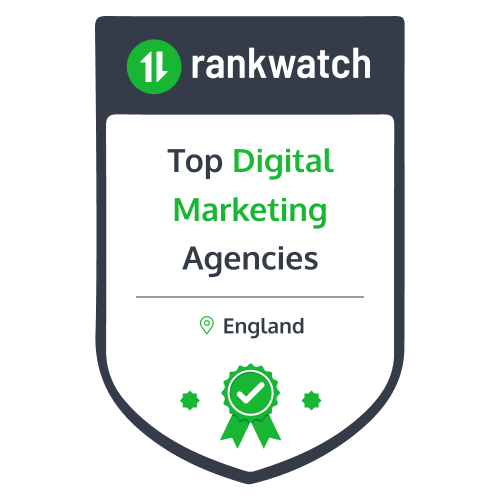
The Secret of Sales & Marketing Alignment.
First build a relationship. Then align your goals. What could be simpler? (hint: everything!)
The Secret to B2B Success Lies in Mutual Interest
Two sales representatives were on a call. The new salesperson, we’ll call him Roberto, is only two weeks into his role. He is proudly showing off his lead automation results. He has achieved an 11% acceptance rate from prospects on LinkedIn. He pauses. “I know the messaging is a bit salesy”, he says. His colleague, who has been part of a campaign that aligns sales and marketing to create an environment where target accounts are given the space to begin a dialogue, chips in. “My acceptance rate just hit 57%. I’ve popped the messaging in the chat”.
If you want someone to take an interest in you, you need to show a genuine interest in them. And then you need to offer them something that demonstrates you have heard what they need, and can address this pain point or opportunity, from a point of understanding.
This principle is crucial not only for building rapport with prospects, but also for internal dynamics between sales and marketing teams. When you have shared vision of success, the results are remarkable: improved efficiency, higher revenue, and a stronger bottom line.
Don’t try to explain to the sales team, how marketing metrics work.
Don’t launch immediately into an explanation of your targeting strategy.
Make them feel heard.
And show them what you can help them achieve.
Achieving this alignment, however, requires more than just good intentions. It demands a focused approach, mutual respect, and shared goals.
Understanding Sales and Marketing Alignment
Sales and marketing alignment is about building a collaborative relationship rooted in mutual respect. This takes effort and ongoing communication to create and maintain. Key to this are onboarding and immersion.
Both teams need to develop a shared language and understand each other’s goals and challenges.
Sales teams often get frustrated when marketing qualifies form fills as leads, knowing that only about one in ten might be a high-quality lead. And while marketing cannot control who fills out a form, they can help sales understand the context and quality of these leads, managing expectations.
Bias and Its Impact on Alignment
One of the critical elements affecting sales and marketing alignment is bias. We have 188 biases – so overcoming these and building a strong working partnership can be hard.
Biases, such as the “curse of knowledge” where one team assumes the other understands their context, or the “framing effect” where information is presented in a way that skews perception, can create significant barriers. These biases often result in misunderstandings and misaligned expectations, leading to friction between teams.
Overcoming these biases requires acknowledging their presence and actively working to mitigate their effects. For example, marketing might assume that sales know the intricacies of their campaigns and the strategic thinking behind lead generation, but this is often not the case. They also don’t want, or need, to know.
Conversely, sales might frame their feedback on lead quality in a way that marketing interprets as overly critical or dismissive.
Standing Out
In his new book, CARE to Win, Alex Draper explores how great leaders influence behaviour. One of his favourite quotes, from Maya Angelou, springs to mind:
“I’ve learned that people will forget what you said, people will forget what you did, but people will never forget how you made them feel”.
Take this to heart when planning your B2B campaigns.
Remember, senior decision-makers are in demand. They are bombarded by sales and marketing efforts every day – email, LinkedIn, conferences, events, phone calls. They will be exposed to thousands of messages daily.
This is – of course – the key to marketing adding value to the sales team. Crafting compelling messaging that not only makes your brand stand out, but makes people think and feel something new, will allow you to cut through the noise.
Working with an agency like BH&P to curate your messaging, helps you create the best environment for your creative to land. This campaign for IDS, for example, combines humour and a strong brand, with a highly targeted message.
This is the power of marketing! If only you could show sales teams the impact. And, of course – remember the conversation with Roberto? – you can.
The Role of Technology
Technology plays a crucial role in facilitating collaboration between sales and marketing teams. But the tech is useless without the relationship and creative messaging to underpin it.
Communication Tools: Platforms like Microsoft Teams enable regular communication, helping both teams stay aligned. Regular touchpoints prevent misalignment caused by silences, ensuring both sales and marketing are aware of each other’s efforts and progress.
CRM & Marketing Automation Systems: Tools like HubSpot allow for easy management of target accounts, stakeholder maps, and buyer journeys, providing both teams with shared visibility and data. This integration ensures everyone is working towards common goals.
Advanced Tools and Practices: Account-based marketing (ABM) platforms are excellent for monitoring intent. While they can be costly, they are beneficial once you have established clear messaging and a reliable lead generation process.
LinkedIn: Let’s face it. Whether we like it or not, both buyers and sellers are on LinkedIn. Your competitors are too. At BH&P, we’ve seen significant success using LinkedIn for brand awareness and engagement, especially with video content. LinkedIn’s targeted advertising capabilities allow for precise audience segmentation, making it an invaluable tool to allow you to seed brand, awareness and engagement content, creating an environment that’s ripe for selling. And while LinkedIn lead generation ads can seem expensive, once you have refined your messages and targeting, they can be used to help B2B brands scale inbound marketing, fast.
The Critical Role of the BDR
Business development, or enablement - and specifically business development representatives (BDRs) - form the linchpin in aligning sales and marketing. BDRs bridge the gap by engaging with leads generated by marketing and nurturing them until they are ready for the sales team. This role requires a deep understanding of both marketing campaigns and sales strategies.
Where brands don’t have anyone filling this role, there is a danger of leads dropping off the radar. An aligned sales and marketing team acknowledges this, ensuring there is clarity around whose role it is to move the prospect along their buying journey.
BH&P have developed a curated LinkedIn automation service, using a customized tool, Liap, that can be used to ease the burden of business development. Liap allows you to build connections with individuals who have engaged with marketing content, ensuring outreach efforts are focused on brands and target accounts with a defined need, and that fit your ideal client persona. This makes the outreach more personalized and effective.
ABM (account-based marketing) strategies can also be particularly effective in B2B marketing. By targeting specific accounts with personalized content and outreach, sales and marketing can work together to nurture high-value prospects more effectively. This approach not only improves alignment but also enhances overall efficiency.
As well as driving efficiency, these approaches significantly increased qualified leads and conversion rates – for BH&P clients, this typically increases the chance of landing a sale by 3-10x.
Final Word
B2B sales and marketing alignment is about building a relationship that allows everyone involved to work together to achieve shared objectives and metrics.
Encouraging a feedback-rich environment helps in identifying misalignments and addressing them promptly, ensuring that both sales and marketing remain agile and responsive to the changing needs of the business and market conditions.
Align this with creativity that changes how people think and feel.
Take the time to understand what prospects need to create a safe environment for them to buy.
Automate what you can.
And then wait!
References:
Draper, Alex. CARE to Win: The Four Leadership Habits to Build High-Performing Teams. Brown Books Publishing Group, 2024.
BLOG
|4 MIN READ
BLOG
|5 MIN READ
BLOG
|4 MIN READ
BLOG
|5 MIN READ
BLOG
|4 MIN READ
BLOG
|2 MIN READ
Sign Up



